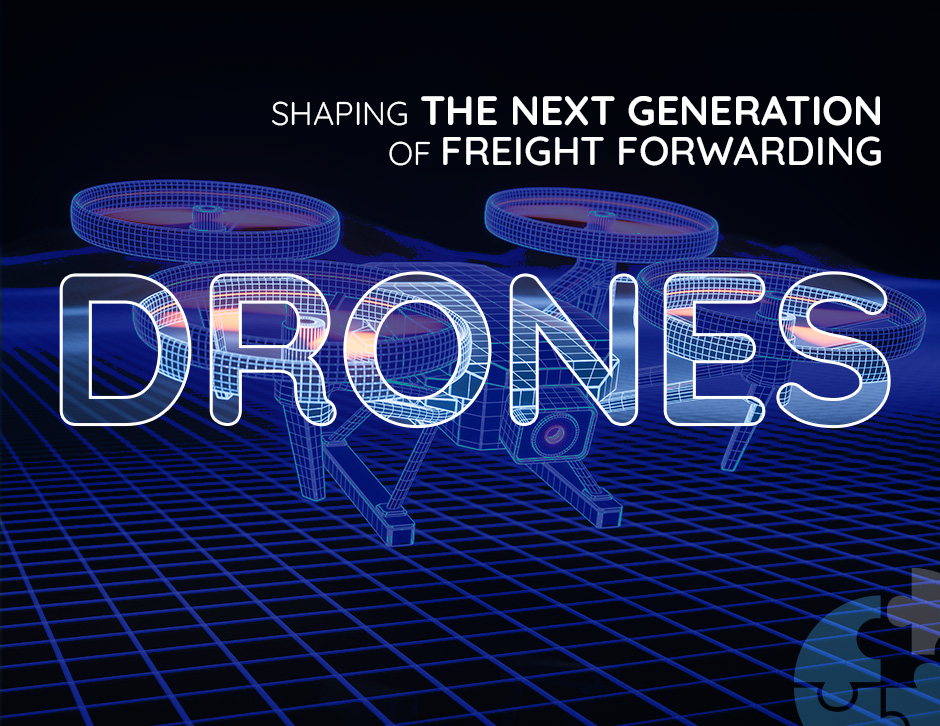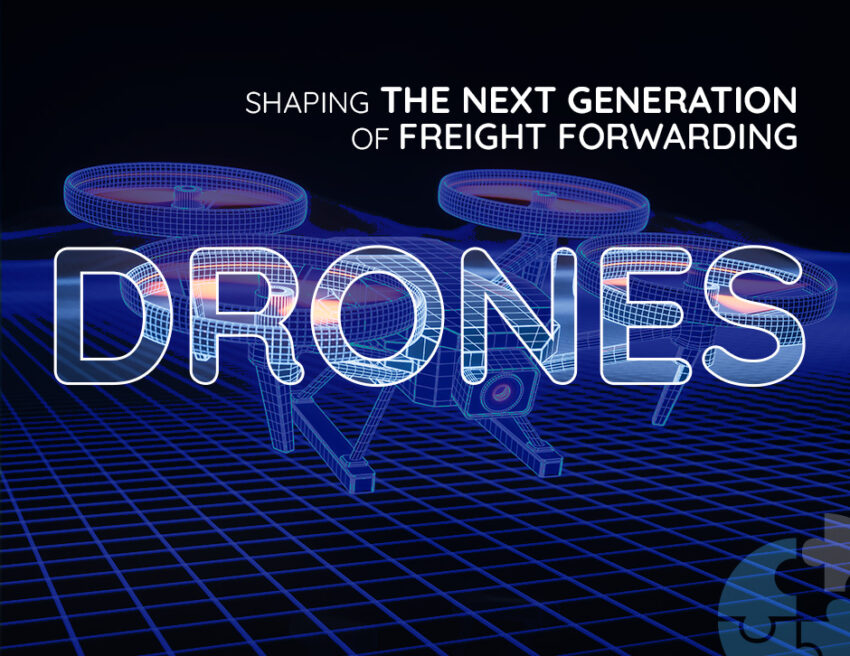Drones, once primarily associated with military or recreational use, are poised to revolutionize the freight forwarding industry. As technological advancements continue to push the boundaries of what drones can accomplish, these aerial vehicles are becoming a crucial tool in the logistics supply chain. From enhancing last-mile delivery to optimizing warehouse operations, drones are set to reshape the landscape of freight forwarding. In this blog, we will explore how drones are driving the next wave of innovation in the freight forwarding sector, focusing on their impact on efficiency, cost reduction, sustainability, and scalability.

1. Drones in Freight Forwarding Industry: A Game-Changer
One of the most significant contributions drones are making to the freight forwarding industry is in last-mile delivery. The last mile, which refers to the final leg of a shipment’s journey to the end customer, is often the most expensive and time-consuming part of the supply chain. This inefficiency has long been a challenge for freight forwarders looking to optimize costs and delivery times.
Drones, however, offer a faster and more cost-effective solution. By bypassing traditional road routes, drones can deliver packages directly to customers, cutting down delivery times and avoiding traffic congestion. In areas with challenging terrain or where infrastructure is limited, drones can deliver goods to otherwise inaccessible locations, making them invaluable for reaching rural or remote customers.
Several companies have already begun deploying drones for last-mile delivery. Amazon, UPS, and Alphabet’s Wing are investing heavily in drone delivery systems, with Amazon’s Prime Air promising to deliver packages within 30 minutes of an order being placed. As these technologies continue to evolve, drones are likely to become a standard feature of last-mile logistics, reducing delivery times and costs for freight forwarders.
2. Improved Warehouse Operations and Inventory Management
Beyond last-mile delivery, drones are also transforming warehouse operations. Drones equipped with RFID (Radio Frequency Identification) scanners and cameras can streamline inventory management processes by quickly scanning and tracking goods within a warehouse. Traditionally, these tasks require manual labor, which can be time-consuming and prone to human error. Drones, on the other hand, can complete these tasks much faster and with greater accuracy.
For instance, inventory drones can fly over shelves, scanning products and updating inventory systems in real time. This level of automation reduces the need for manual stock checks, freeing up workers for more complex tasks and increasing the overall efficiency of warehouse operations. Additionally, drones can assist in space management by capturing data on warehouse layout and helping to optimize storage solutions.
By improving inventory accuracy and reducing operational costs, drones are helping freight forwarders to increase the efficiency of their supply chains, ultimately leading to faster processing times and lower expenses.
3. Cost Reduction and Scalability in Freight Forwarding Industry
The cost of logistics operations is one of the biggest challenges faced by freight forwarders, particularly for small and mid-sized companies trying to compete with industry giants. Drones offer a solution to this issue by reducing many of the costs associated with traditional freight forwarding.
For example, drones eliminate the need for vehicles, fuel, and drivers in certain delivery scenarios. This leads to significant savings, especially for last-mile deliveries in urban environments where traffic congestion can cause delays and increase fuel consumption. Moreover, as drone technology advances, the cost of producing and maintaining drones is expected to decrease, making them a more affordable option for logistics companies of all sizes.
Scalability is another benefit of drone technology. Unlike traditional delivery vehicles that require large fleets and complex logistics planning, drones can be rapidly deployed and scaled to meet increasing demand. This makes them particularly valuable during peak shipping seasons or for handling sudden surges in demand, such as during the holiday season or following major promotional events.
4. Sustainability and Green Logistics
Sustainability is a growing concern for logistics companies, many of whom are under increasing pressure to reduce their carbon footprint. Traditional freight forwarding methods, particularly road transport, are significant contributors to greenhouse gas emissions. Drones, however, offer a greener alternative.
Since drones are typically powered by electricity, they produce zero direct emissions during operation, making them an eco-friendly option for delivering goods. By replacing traditional delivery vehicles with drones, freight forwarders can significantly reduce their environmental impact, aligning with global efforts to combat climate change.
In addition to reducing emissions, drones also help minimize fuel consumption. This is particularly beneficial in urban areas, where traffic congestion can lead to idling engines and wasted fuel. By flying over traffic, drones not only reduce delivery times but also help to lower fuel-related emissions, contributing to a more sustainable logistics ecosystem.
5. Enhanced Security and Data Collection
Drones can also improve security within the freight forwarding industry. By using drones equipped with cameras and sensors, logistics companies can monitor shipments, track vehicles, and ensure the security of goods throughout the supply chain. This is particularly useful for high-value shipments or in regions where theft and cargo tampering are prevalent.
Additionally, drones provide valuable data that can be used to optimize logistics operations. For instance, drones can capture real-time data on traffic conditions, weather patterns, and route efficiency, enabling freight forwarders to make more informed decisions about delivery routes and timing. This data can also be used to predict and prevent potential disruptions in the supply chain, ensuring smoother operations and fewer delays.
6. Regulatory Challenges and the Future of Drones in Logistics
While the potential benefits of drones in the freight forwarding industry are vast, there are still regulatory challenges that need to be addressed. Many countries have strict regulations governing the use of drones, particularly in populated areas. Issues such as air traffic safety, privacy concerns, and drone certification requirements must be resolved before widespread drone adoption can take place.
However, progress is being made. In the U.S., the Federal Aviation Administration (FAA) has begun approving pilot programs for drone delivery, and other countries are following suit. As regulations evolve, it is expected that drone usage in logistics will expand rapidly, paving the way for more widespread adoption.
Conclusion: A New Era for Freight Forwarding
Drones are set to play a transformative role in the next generation of freight forwarding. From last-mile delivery to warehouse management, the benefits they bring in terms of speed, cost reduction, sustainability, and scalability are undeniable. As the technology continues to evolve and regulatory hurdles are overcome, we can expect drones to become an integral part of the logistics industry.
For freight forwarders, embracing drone technology will be essential to staying competitive in a rapidly changing landscape. The future of logistics is not just about getting goods from point A to point B—it’s about doing so more efficiently, sustainably, and securely. Drones are a key tool in achieving this vision, and their impact on the freight forwarding industry will be felt for years to come.


